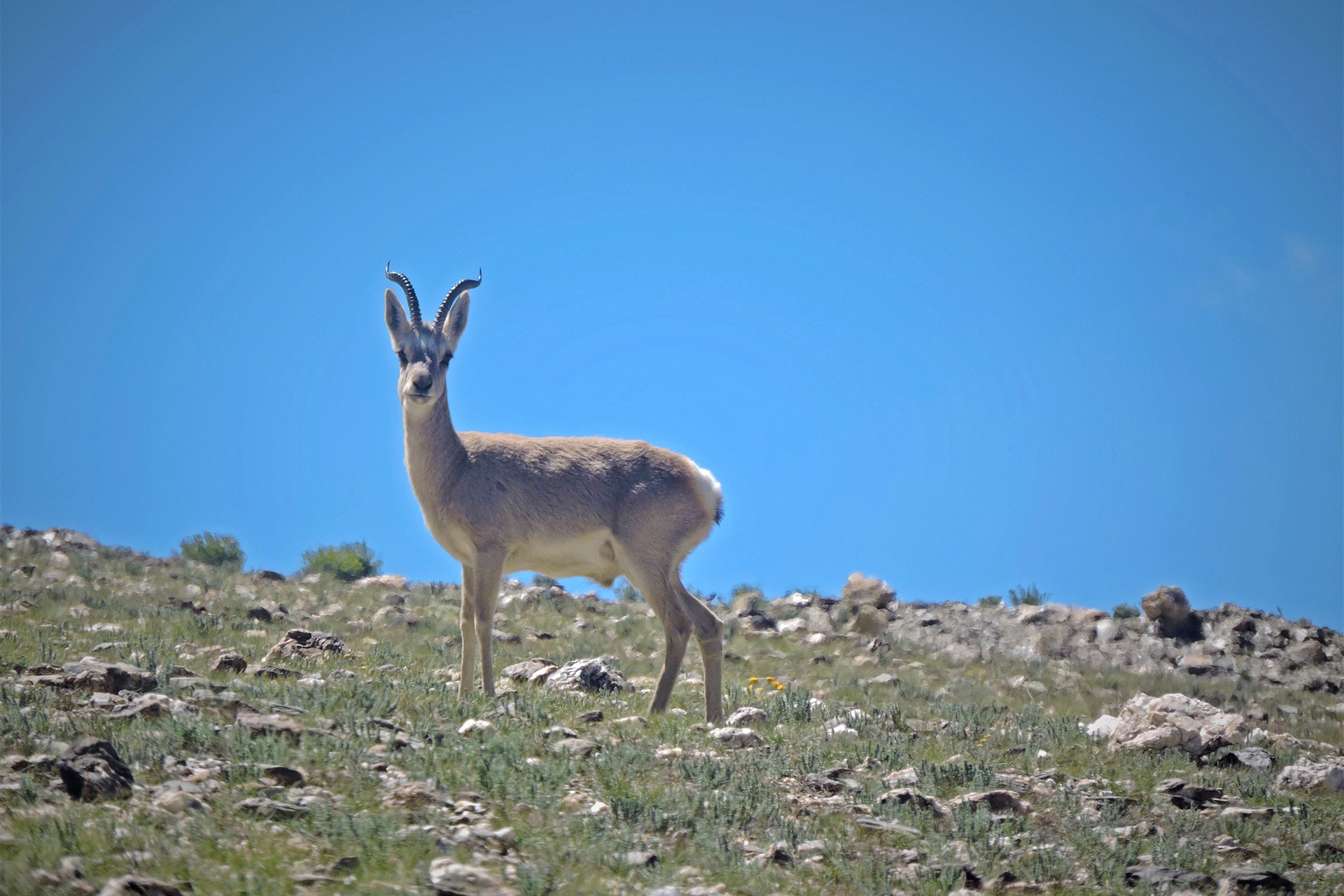In the cold desert steppe landscape of India's Trans-Himalayan region resides one of the rarest large mammals found in the country – the Tibetan Gazelle (Procapra picticaudata). The only wild member of the Antilopinae sub-family in the region, a small population of Tibetan Gazelles is spread across the Indian Changthang in southern and south-eastern Ladakh and the Gurudongmar-Tso Lhamo plateau in north Sikkim.
This unforgiving landscape of the Changthang plateau expands from India's Ladakh into north-western Tibet (China). With steppe vegetation, high rolling mountains and extreme weather conditions, it is home to the Tibetan Gazelle or Goa – one which it shares with wolves, Snow Leopards, Tibetan Argali, Tibetan Wild Ass or Kiang and domesticated livestock. For nearly two decades, through the 1960s and 1970s, the Tibetan Gazelle along with Kiang was persecuted for subsistence – to almost local extinction – in Indian Changthang.
While the Kiang recovered from the decimation of the 60s and 70s and is now widely distributed across the Indian Changthang, the bulk of the Tibetan Gazelle population is confined to just 100-150 sq. km in the Kalak Tartar plateau of the Hanle Valley.
Although the desiccated landscape of the Changthang appears barren, there are ample species of vegetation on which the Tibetan Gazelle can forage. But, the gazelles also share this habitat with the Changpa people, the native community of the Changthang, and their livestock, leading to competition for forage availability.
Adding to such pressures is the recent dominance of feral dogs, a species that has emerged as the top predator in the Indian Trans-Himalayan region. The dogs frequent the remotest tracts of the Changthang. But their impact on the remaining population of the Tibetan Gazelle is yet to be investigated.
Even today, the exact population figures of the Tibetan Gazelle remain unknown, and the genetic dynamics of the metapopulations (small connected populations) are yet to be understood. The ecological and conservation processes underlying such a dramatic shrinkage, and the failure to recover continues to be unclear.
Despite the near cessation of hunting in the Indian Changthang, the Tibetan Gazelle couldn’t reclaim its lost grounds. Did the relatively rapid recovery of Kiangs prevent the gazelles from recolonising past habitat patches? Or was the failure facilitated by the expansion and intensification of livestock grazing in the region, perhaps leading to a decline in the availability of forb-dominated patches in the Changthang, crucial for the gazelle diet? Or could the failure in population and habitat recovery have something to do with the genetics of the small remnant populations?
The remarkable contrast in the current conservation status of the Tibetan Gazelle and Kiang offers a natural experimental set-up to investigate failure and success in species recovery, within the larger Changthang landscape.
The current restricted range of the Tibetan Gazelle is very close to the international boundary. A partnership between wildlife conservation agencies, security forces and local herder communities could facilitate better management of the Tibetan Gazelle habitat in the Indian Changthang.
Acknowledgements: The Ladakh Autonomous Hill Development Council (LAHDC), Leh, and the Department of Wildlife Protection, Jammu & Kashmir, have been long-term supporters in wildlife surveys and community-based conservation works. Sincere thanks to the NCF Field Team for support during surveys in Ladakh.







